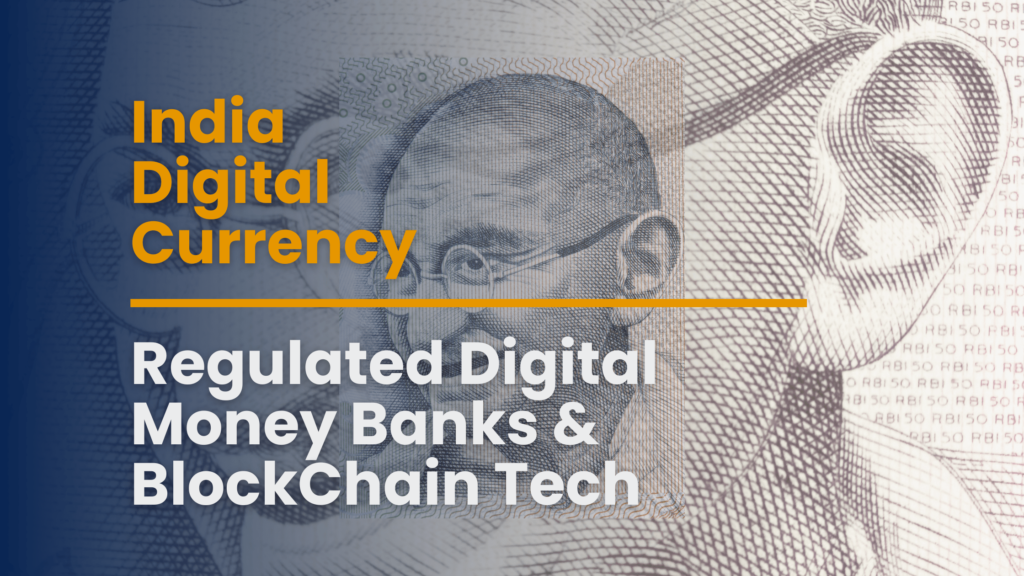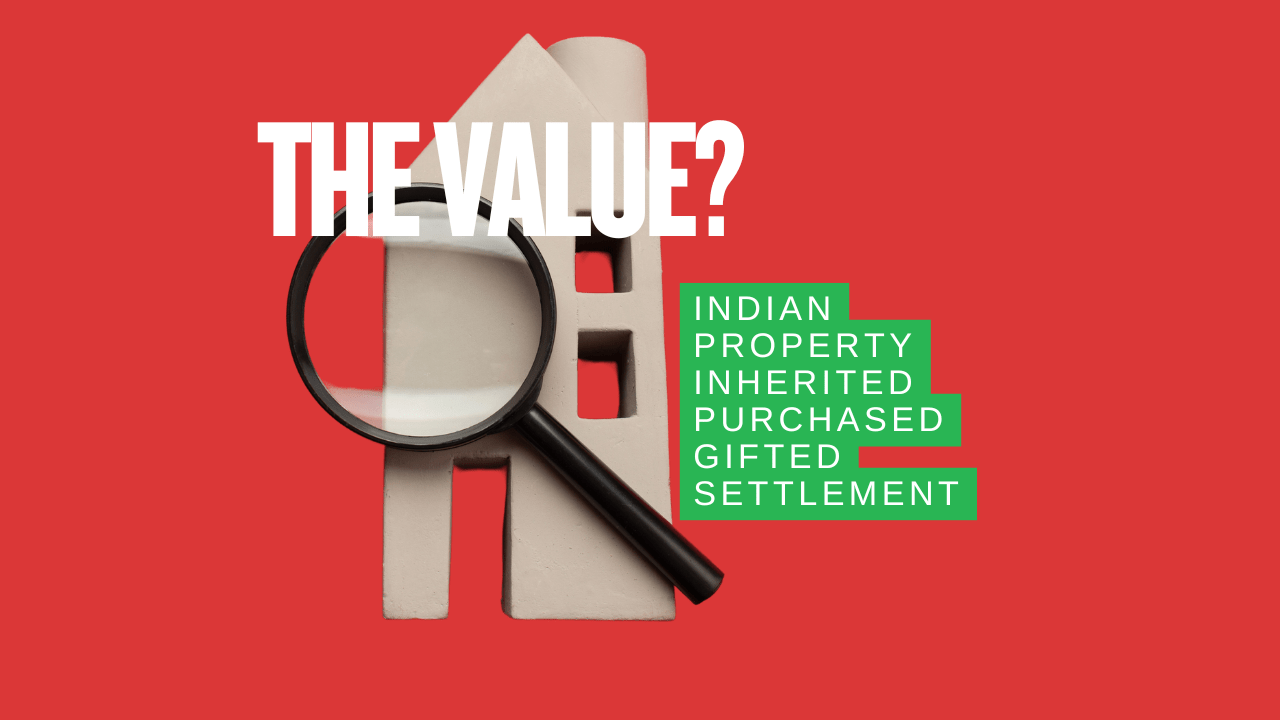In this article we look at the India digital currency pilot by Reserve Bank of India. And it’s steps to trial a new way of money. The first test pilot of CBDC was released during October/November 2022.
Subsequently, we’ll consider potential & upcoming changes if any. What to expect in the next few years for money & investments, such as property and bank accounts in consideration of the (e₹) digital rupee.
Indian Digital Currency Landscape
Firstly, what does “CBDC” stand for? The full form is Central Banks Digital Currency. A central bank is a financial institution of any given country. Majoritively regulated by the government of that particular country. In India the central bank is the Reserve Bank of India.
Next, what is digital currency according to the Reserve Bank of India?
What is Digital Currency
“Reserve Bank of India defines CBDC as the legal tender issued by a central bank in a digital form.”
Further, the Reserve Bank of India’s publication report, states the following;
(report by the CPMI-MC published in 2018) “defines CBDCs as new variants of central bank money different from physical cash or central bank reserve/settlement accounts. That is, a central bank liability, denominated in an existing unit of account, which serves both as a medium of exchange and a store of value.
It is the same as a sovereign currency and is exchangeable one-to-one at par (1:1) with the fiat currency. While money in digital form is predominant in India—for example in bank accounts recorded as book entries on commercial bank ledgers—a CBDC would differ from existing digital money available to the public because a CBDC would be a liability of the Reserve Bank, and not of a commercial bank.
In short it is a currency backed by the central bank.
Other Names & Terms Used
- Digital Rupee
- e-RUPI
- e-rupee
- Central Bank Digital Currency (CBDC)
- Digital Currency
Before we divulge into further detail of the Indian CBDC, below is a brief comparison of the development of money systems from gold standard to current day.

Gold Standard – Fiat – Digital Currency
| Gold Standard Money | Fiat Money | Digital Currency |
| Pre 2013: Monetary system backed by gold. Converted paper money into fixed amount of gold. From 2013 no countries now use this practice. | 2013 – Present day: Fiat money. Money that is not backed by gold standard. Includes paper money and coins. Issued by decree or by “fiat” by central banks (governments) country to country. Face values exceed commodity values. Paper and coins. | 2023 Pilot: The same as a sovereign currency (digital version) and is exchangeable one-to-one at par (1:1) with the fiat currency. Cashless. |
Undeniably, in the last few decades, payment and settlement systems throughout the globe have seen a huge change. There has been a transformation from commodity backed money to fiat and now towards a more centralised approach with digital currency.
Now, we’ll go into further detail of what the CBDC landscape may actually look like in the years ahead.
Types of CBDC India Digital Currency
CBDC has been broadly segmented into two types by RBI;
- General purpose (retail) (CBDC-R) and
- Wholesale (CBDC-W)
CBDC-R is potentially available for use by all private sector, non-financial consumers and businesses.
Wholesale CBDCs are designed for restricted access by financial institutions.
3 Key Features of CBDC
- CBDC is a sovereign currency issued by Central Banks in alignment with their monetary policy.
- Freely convertible against commercial bank money and cash and Fungible legal tender for which holders need not have a bank account.
- Expected to lower the cost of issuance of money and transactions.
Reasons Behind Digital
- Central Banks, faced with dwindling usage of paper currency, seek to popularise a more acceptable electronic form of currency (like Sweden);
- Jurisdictions with significant physical cash usage seeking to make issuance more efficient (like Denmark, Germany, Japan or even the US);
- Countries with geographical barriers restricting the physical movement of cash had motivation to go for CBDC (e.g. The Bahamas and the Caribbean with small and large numbers of islands spread out);
- Central Banks seek to meet the public’s need for digital currencies, manifested in the increasing use of private virtual currencies, and thereby avoid the more damaging consequences of such private currencies.
Intrinsically, in the current day economic volatility, reliable assets such as, trust, safety, liquidity, settlement finality and integrity have been identified as key by RBI in shaping the CBDC.
CBDC & India Digital Currency Progress
India has been a prominent name in recent innovations of digital payments. India’s payment systems are available 24X7, 365 days a year to both retail and wholesale customers, they are largely real-time, the cost of transaction is one of the lowest in the world, users have a wide array of options for transactions. India’s digital payments have grown at CAGR of 55% over the last five years.
“Less Cash Economy” rather than a “Cashless Economy”
India Retrospect : Traditional Money & Last Few Years
- India has enacted a separate law for Payment and Settlement Systems which has enabled an orderly development of the payment eco-system in the country.
- The present state-of-the-art payment systems that are affordable, accessible, convenient, efficient, safe, secure and available 24x7x365 days.
- Payment preference, such as RTGS and NEFT have facilitated seamless real time or near real time fund transfers.
- IMPS and UPI for instant payment settlement, the introduction of mobile based payment systems such as BBPS, and National Electronic Toll Collection (NETC) to facilitate electronic toll payments have transformed payments in India.
- The Reserve Bank has played the role of a catalyst towards achieving its public policy objective of developing and promoting a safe, secure, sound, efficient and interoperable payment system.
- The Reserve Bank of India has been consistent in highlighting various risks related to the private cryptocurrencies.
- Recent technological advances have ushered in a wave of new private-sector financial products and services, including digital wallets, mobile payment apps, and new digital assets.
Circulation of banknotes
However, according to a publication report by the RBI, despite the rapid digitisation of payments over the last decade in India, cash circulating in the Indian economy has increased. The demand for cash has not reduced yet. There are a number of influencing factors involved in the reason for cash circulation.
For example, the percentage increase in volume of banknotes;
Y 2020-21 – 7.2%
Y 2021-22 – 5.0%
Reasons include; (2021-22) holding of cash by the public induced by the second wave of COVID-19 pandemic. Of course, this is subject to change.
The Model CBDC – Real time Implementation in India
Indirect Model
India is currently pilot testing CBDC based on the “indirect CBDC” model.
The model entails, consumers hold their CBDC in an account/ wallet with a bank, or service provider. To hold a bank account in India you would require a PAN card. The obligation to provide CBDC on demand would fall on the intermediary (i.e. a bank) rather than the central bank. The central bank would track only the wholesale CBDC balances of the intermediaries.
Amendments to Policy
Under the RBI Act, 1934, the Reserve Bank has the sole right to issue bank notes, which has now been amended to include currency in digital form as well. Therefore, in the “Indirect Model,” RBI will create and issue tokens to authorised entities called Token Service Providers (TSPs) who in turn will distribute these to end-users who take part in retail transactions.
Banknotes or Tokens
Further, the CBDC system can be structured as ‘token’ or ‘account’ based or a combination of both;
A token-based CBDC system would involve a type of digital token issued by and representing a claim on the central bank and would effectively function as the digital equivalent of a banknote that could be transferred electronically from one holder to another. (Similar to the instrument of banknotes).
In an account-based CBDC system, during the initial creation of each CBDC account, the identity of the account holder would need to be verified (KYC) and from that point onward, payment transactions could be conducted rapidly and securely. (Similar to the record of balances and transactions).
RBI is exploring the option of implementation of account-based CBDC in Wholesale segment and token-based CBDC in Retail segment via a graded approach.
Participatory Banks – Retail Pilot India Digital Currency
- State Bank of India
- ICICI Bank
- Yes Bank
- IDFC First Bank
- Bank of Baroda
- Union Bank of India
- HDFC Bank
- Kotak Mahindra Bank
Intermediary Provider NPCI & e-RUPI
For the “e-RUPI” – the National Payments Corporation of India (NPCI) (Not for Profit), is an umbrella organisation for operating retail payments and settlement systems in India, initiative of Reserve Bank of India (RBI) and Indian Banks’ Association (IBA) under the provisions of the Payment and Settlement Systems Act, 2007.
According to NPCI, their core purpose is to provide infrastructure to the entire Banking system in India for physical as well as electronic payment and settlement systems. NPCI are also responsible for the RuPAY payment system in India.
CBDC & PAN Under KYC
As we discussed in our last segments, the requirement of your Permanent Account Number is mandatory to holding an account in India. Whether that is an NRO or NRE account as a Foreign Citizen you should ensure that you are up to date and prepared for upcoming changes to the financial landscape of the Indian monetary system.
Potential Impact on Financial Investments & Property
- May make settlements more efficient and secure
- Easier access to finance
- Instant cross border transfers
- Faster & lower cost transactions
- NRI’s who hold digital Rupee can use it for international financial transactions
Private Virtual Currencies
Before we finish, let’s look at the other end of the spectrum.
Private virtual currencies, such as cryptocurrencies. The Reserve Bank’s view on PVC’s, is that, “they are not commodities or claims on commodities as they have no intrinsic value.”
Despite this, it can be said with some certainty that PVC’s have had a large role to play in Central banks moving ahead with digital currency. Further, we could say CBDC have been the response to PVC phenomenon. A key difference between CBDC and PVC is that one is centralised/regulated whereas the other is decentralised/nonregulated.
Foreign Citizens Investments & Finance in India
To summarise, there is still a considerable amount of work underway by the RBI in relation to India’s digital currency e-Rupee.
Yet, the current pilot projects will gradually, in a phased manner be rolled out further into public systems as specified by the RBI publication. Eventually, changes to the way in which money exists and is handled in such a large country inevitably will have an impact on the economic behaviours of the country. Although, you cannot predict the wide scale impact of (e₹) so far in advance, the pros and cons will be inline with the number of investments that you hold in India.
References; (RBI.publicationreport7102022) (MinistryofFinanceIndia.PIB.12122022)
Frequently Asked Questions
Central Bank Digital Currency
SBI, ICICI, Yes Bank and IDFC
A PAN is a mandatory requirement for an Indian bank account.
Related Services
- Transfer of property in India
- Indian Property disputes
- Sell property in India
- Power of Attorney Service
We can also assist with other Overseas Indian Services in London:
- Illegal occupation of property in India
- Family Settlements and partition of NRI Indian property
- Ancestral real estate and inheritance advisory under Indian law
- NRI Property Transfer
- Possession of NRI Property
- Recovery of NRI money under Indian Law
- NRI Succession Certificate in India
- Injunction against alienation of NRI property in India
- Developer Claims under the Consumer Protection Act in India
- NRI property disputes
- Visas to India
- Indian Power of Attorney
- NRI PAN Card
- Overseas Citizenship of India (OCI)
- Inter-Country Adoption
- Divorce proceedings under Indian Law for parties settled abroad






